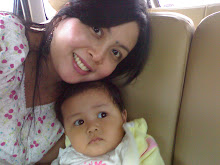| By four months of age your baby will be very alert to the sights and sounds around him. His movements are more organized and purposeful; he learns to reach, grasp and manipulate objects and is also starting to move himself around. What your baby can do • He learns to reach for objects with both hands at around four and a half months and will invariably take a toy to his mouth to explore.
• He will turn his eyes and head to find a sound and his vision is now more accurate so he will follow your movements across the room. • From about five months your baby will start to roll to the side and will then progress to rolling onto his tummy.
• On his tummy he will be able to push up on straight arms; at first his hands will be out in front but by six months he will be well up with his chest high off the ground. • With plenty of tummy time your baby will develop the upper body strength and muscles that he’ll use to roll over.
• Voluntary rolling generally happens anytime from five or six months. Babies do roll earlier, but it is often accidental. • Rolling from back to tummy is generally harder than rolling from tummy to back.
• Around six months of age he will reach for an offered rattle and shake it and enjoys banging a toy on a surface in play. He will transfer a toy from hand to hand. • When placed on his feet your baby will bounce, taking a large part of his body weight
• When lying on his back, he’ll raise his feet and grasp one, then eventually two. After some practice he will succeed in getting a foot into his mouth. • By six months your baby will move his head and eyes in every direction when his attention is attracted.
• Around six and a half months he will begin to pivot in a circle on his tummy. He will also start to get on his hands and knees. • Sometime after six months your baby will start to be able to sit alone; at first propping forward on hands, then gradually straightening up his back and sitting without hand support for longer periods.
• Your baby will understand and respond to his own name and may be content to play by himself for short periods of time. • Between seven and eight months your baby may begin to crawl with his tummy on the ground; generally he will move backwards before he can go forwards. Not all babies go through this stage before crawling on, their hands and knees.
How to help you baby learn
Talking
• Always respond to your baby’s attempts to communicate as it is through these early turn taking conversations that he will eventually learn to copy your sounds and make his first words. Rolling
• You can help your baby to roll from his back to tummy by first getting him to look to one side, then bending the opposite leg up and rolling it over the other. Make sure that his lower arm is raised to shoulder height so he doesn’t get it stuck under him. Sitting • To encourage sitting, let your baby sit between your legs for support and prop a toy or activity board up in front of him so he can move his hands up off the floor. • Once he is able to sit up without propping on his hands, you can play a “tick-tock” game to encourage him to put his hands down to the side to save his balance. Do this by holding him at the shoulders and slowly tipping him from one side (onto his hand) to the other side, while singing Hickory Dickory Dock. Crawling
• Give you baby’s early attempts to crawl a help by placing your hand against the sole of the foot (he will flex one leg forward as he reaches – this is the foot you hold). This gives him something solid to push off. Once he pushes off this foot, and then helps the other foot. |
BABY MILESTONES - FOUR TO EIGHT MONTHS
Labels: little treasures, mom and baby info
Subscribe to:
Post Comments (Atom)

No comments:
Post a Comment